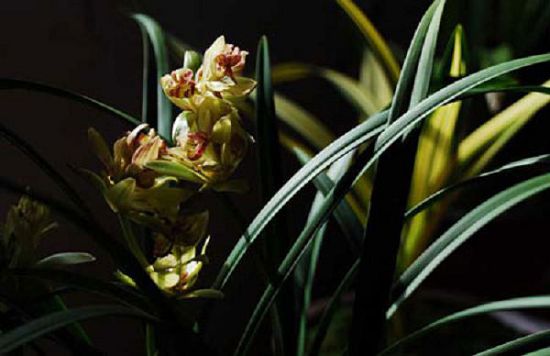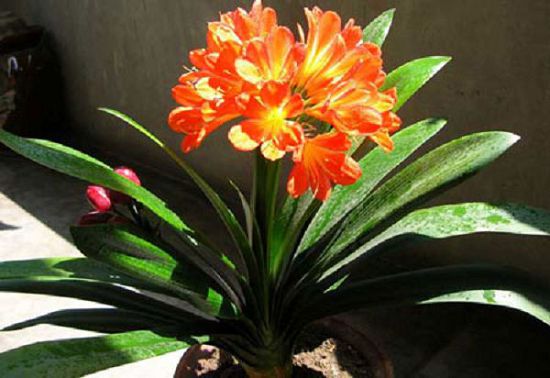How to water potted orchids? Watering methods of orchids

When are the orchids watered?
1. According to the condition of the leaf surface of the orchid plant and the dry and wet condition of the surface of the orchid basin, if the leaf surface of the orchid plant is slightly dehydrated, the plant material on the surface of the orchid basin has been dried thoroughly, and the plant material on the surface is about 5 cm, which indicates that the plant material is not hydrated enough and should be watered.
2. Insert a bamboo stick into the appropriate position of the orchid basin carefully, draw it out about an hour later, and judge the amount of water content in the orchid basin plant according to the humidity of the bamboo stick.
3. Pick up a pot of orchid, put it to your ear, and tap the edge of the orchid basin with your hand. If the sound is stuffy, it means that the plant material still contains a lot of water. If the sound is crisp, it is time to water. However, this method requires some experience, and it is not easy for ordinary people to master.
Watering of orchids
1. According to the seasonal changes, that is, the specific conditions of orchid growth, watering should be done according to the specific conditions of orchid growth. In spring, summer and autumn, orchids should be watered frequently and thoroughly when they are in a prosperous period. Do not water half of the orchid during the high temperature period in midsummer. Avoid watering half of the water in order to eliminate the turbid gas in the basin. If the temperature is low from late autumn to early spring, the plant growth should be watered less, and the plant growth basically stops in the cold and winter season. It should be watered less or not, but the basin soil must be kept wet, otherwise it will affect the smooth progress of plant metabolism, delay the unearthed time of buds, and the buds are thin and weak.
2. According to the large and small orchid pots, more and less plants, large pots and more plants, they should be watered frequently, watered more and watered thoroughly, and do not water half of the water. if the pots are small and the plants are few, they should be watered frequently, less and thoroughly, and do not water half of the water.
3. According to the orchid basin plant material, the coarse and hard plant material is good in air permeability and filtration, but the effect of water conservation and fertilizer conservation is very poor, so it should be watered frequently, watered more, watered thoroughly, and should be fertilized frequently. The permeability and filtration of hard and soft mixed plant materials are relatively poor, but the effects of water and fertilizer conservation are relatively good, so the time of watering and fertilization should be properly prolonged, while the permeability and filtration of soft plant materials are relatively worse, but the effects of water and fertilizer conservation are better. It is more appropriate to prolong the time of watering and fertilization.
Watering methods of orchids
1. Irrigation: irrigation is to inject water along the edge of the basin with a kettle. The advantage of this method is that the water will not reach the center of the leaf, but the disadvantage is that the watering speed is slow and it is difficult to water through. It takes repeated irrigation to achieve the effect of watering through.
2. Sprinkling: sprinkling is to sprinkle water with a spray pot or shower head to wet the whole orchid environment, so that the water seeps from the soil surface to the orchid root and moistens the orchid basin. The advantage of this method is that the water can be watered through the whole orchid basin, but the disadvantage is that the water is easy to splash into the leaf heart, so be careful to use it, otherwise it will break your heart.
3. Immersion: 3/4 of the orchid basin is immersed in water together with the plant material. The advantage is that the water can be soaked, but the disadvantage is that it is easy to spread bacteria, and it is labor-consuming and time-consuming. Orchid cultivation experts often mix these three methods, and the effect is very ideal.
4. Spray: spray is to spray fine mist with a sprayer, scattered directly on the orchid leaves, so that the orchid leaves can be absorbed into the body through stomata.
5, humidification: humidification is to increase air humidity, let orchid leaves absorb, there are also several ways to humidify.
① uses a humidifier to remove fog and increase the humidity of the space.
② increases the water surface and sets up water basins under the orchid shelf to increase the humidity of the space by water volatilization.
③ artificially simulates rainfall, splashes water fog, increases air humidity, and also uses an oxygen pump to help volatilize water vapor in the basin, and so on.
Related
- Is the orchid suitable for indoor use? Is it good for the body?
- How to prevent the empty root of orchids?
- What to do after the crab claw orchid is withered?
- Why are the leaves of orchids always yellow? Fertilizing and watering.
- Can the root of the gentleman orchid be saved if it is rotten?
- Diagnosis and treatment of cotton-blowing beetle insects in Cymbidium
- There is a way for a gentleman's orchid to rot.
- What is the most suitable temperature and humidity for the orchid?
- How to raise a gentleman's orchid? Cultivation techniques of Cymbidium
- How to prepare the nutritive soil for the cultivation of Cymbidium



